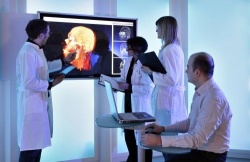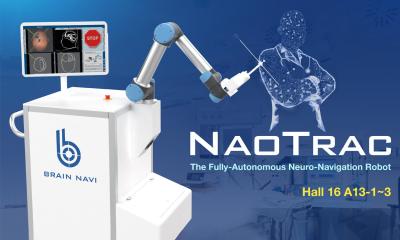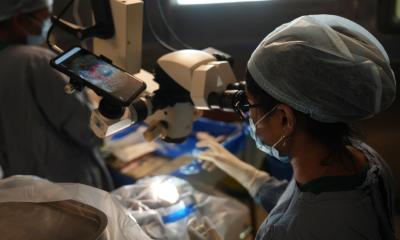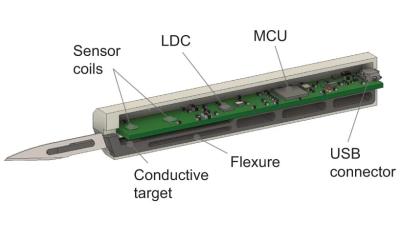The Surgical Planning Unit
Interview: Karoline Laarmann
Surgical planning is complex. Today’s surgeons can utilise information from various sources – including CT and MRI images, as well as f-MRI, PET or electro-physiological signals. For minimally invasive surgery (MIS) these additional imaging data are of particular importance, in that they enable precise navigation within the body.

However, the ability to assimilate all the separate data and create a coherent picture on which to base surgical planning depends very much on a surgeon’s level of experience. Currently that leaves the less practised disadvantaged.
The situation will soon be history, believes Professor Jürgen Meixensberger, Director of the Board at the Innovation Centre for Computer-Assisted Surgery (ICCAS) and Director of the Clinic and Polyclinic for Neuro-Surgery at Leipzig University Hospital in Germany.
ICCAS, part of the medical school of Leipzig University, has developed a globally unique high-tech room for surgical planning, in which all available patient data are converted into an animated 3-D patient model. ‘The Surgical Planning Unit (SPU) is the ideal platform for strategic surgical planning,’ Prof. Meixensberger explained. ‘It allows us to discuss the complexity of an intervention beforehand and thus offers perfect training grounds for less experienced surgeons.’
Asked how medical imaging and IT is combined in the SPU, he said that generally the radiology department supplies the surgeon with several types of slice images, acquired in different planes: axial, sagittal and coronal. ‘He has to use his imagination to create a 3-D image from these data. That’s fine for an experienced surgeon, but might be a bit more problematic for a less experienced colleague. In the SPU information technology takes over the task of human imagination. The software generates an animated 3-D image of the entire organ based on the different volume data that were acquired before. Then, different layers, such as skin or bones, can be removed to reveal where exactly a tumor is located and which sensitive regions, such as arteries and nerves, are involved.’
Is the SPU tomorrow's surgical workbench?
‘Absolutely: The SPU not only allows identification of the surgical method suited best for the individual patient, but the intervention itself can be simulated either virtually or on a plaster model. Thus complex or new techniques can be trained. Moreover, the SPU provides the ideal platform, for example, for the so-called tumour boards to discuss the complexity of a case and define the surgical strategy: What are the relationships between the risk structures? Where are the resection margins of the tumour? Where is the best access?
‘Furthermore,’ he added, ‘in a next step, the data are linked to surgical support systems, such as device navigation or distance alarm systems, which means that the modelling information is forwarded directly to the OR and the surgeon can focus completely on the intervention itself.’
Is SPU applicable for all surgical operations?
‘At ICCAS we primarily deal with issues surrounding ENT, neurosurgery and cardiac surgery. In two of our SPU research projects we are looking for the ideal heart valve replacement, or for the ideal hearing aid. But many other applications, such as soft tissue surgery of the liver, benefit from the equipment. However, one has to take into consideration that the generation of a virtual 3-D model from various imaging modalities is still a rather time-consuming task. Converting 10 million data from a volume data set into an organ model takes a whole day. Therefore our research and development team is looking at ways to further accelerate data processing, so that, at some future date, we’ll be able to plan all clinical cases, not only the complex ones.
Funding - ‘Our SPU prototype was financed by the German Federal State of Saxony with costs amounting to about €700,000. Integration of hardware and infrastructure was the most expensive task. We have already received inquiries from USA and French institutions that are interested in our approach.
‘In addition the SPU presents an entirely new space culture within a hospital, which means that we are also trying to figure out the ideal location of such a planning unit. Surgical planning and simulation are tasks that are neither part of radiology nor of the OR, but are performed outside diagnosis and actual surgery. Thus, an SPU could also be conceived as a remote telemedical service. I’m convinced that, above all, hospitals offering complex surgical procedures will soon be equipped with an SPU.
21.05.2010










